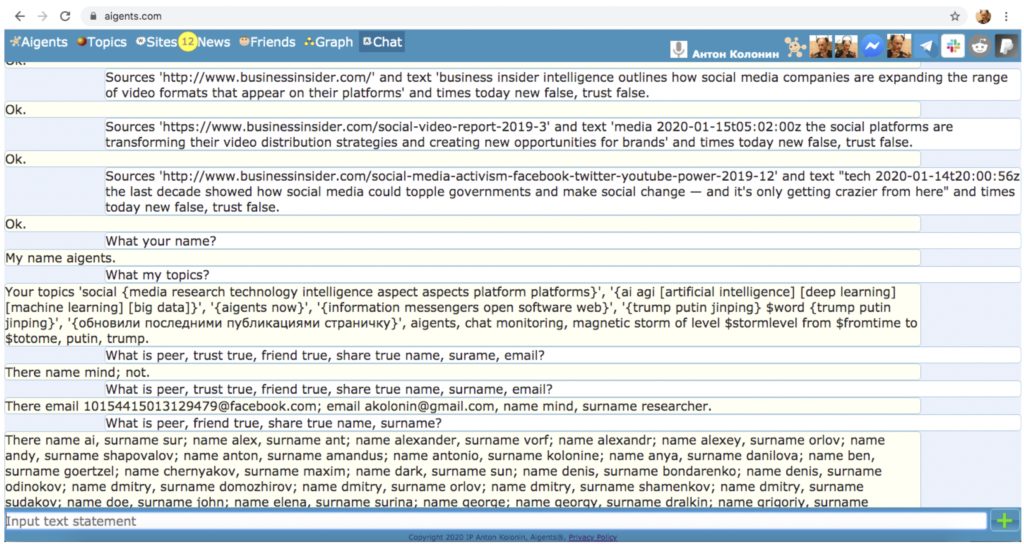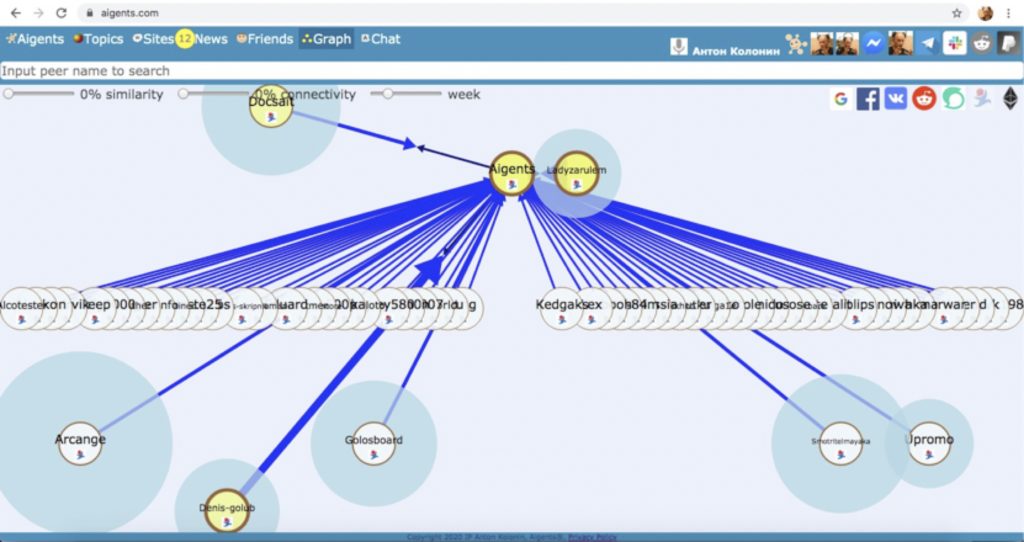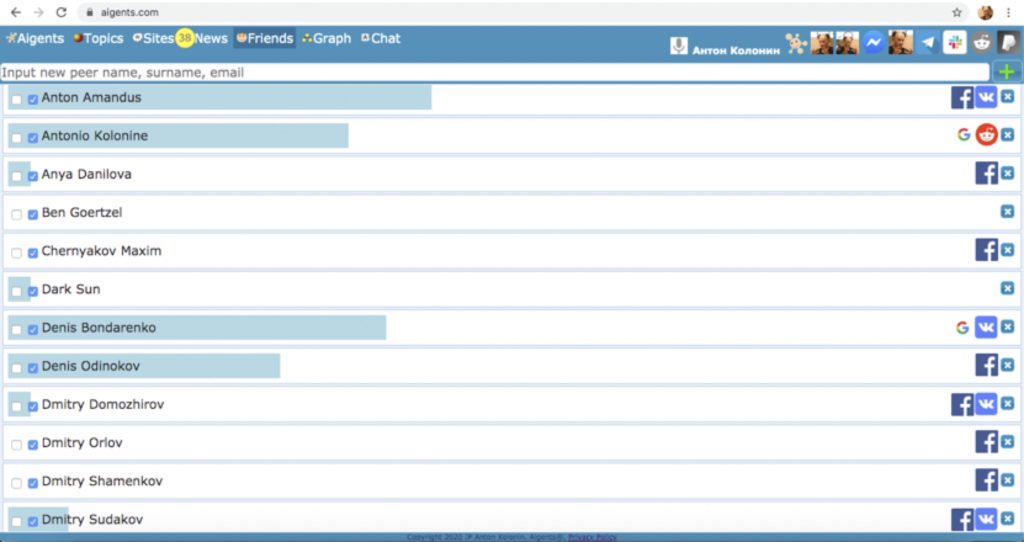Tutorials
Tutorial Index
To register for free for the virtual AGI-20 conference, now extended to June 22-26, 2020, please submit your email on this Google form.
PLEASE REFER TO THE SCHEDULE PAGE FOR THE LATEST SCHEDULING UPDATES
- Building online environments for social AI agents with Aigents
- Probabilistic reasoning and pattern mining using OpenCog
- Applied Neural-Symbolic Integration Using OpenCog
- On logic and probability synthesis in AGI
- The NARS Cognitive Architecture
Presenter(s): Anton Kolonin
Affiliation: SingularityNET, Novosibirsk State University
Tutorial description: Aigents Platform Demo Web User interface operations and code-level overview of integration, extension and customization options.
AGI relevance: Aigents Platform makes AI able to find, consume, comprehend and handle textual information and inter-personal social ineractionst online growing the richness of environment to human-level.
Demo images:



Presenters: Nil Geisweiller, Matthew Iklé
Affiliation: SingularityNET
Tutorial description: We will cover two OpenCog tools: Probabilistic Logic Networks (PLN) and the OpenCog Pattern Miner, paying particular attention to their use in our current investigations into longevity research, as well as providing an overview of our current meta-learning work. PLN is a novel conceptual, mathematical and computational approach to uncertain inference which encompasses ideas such as induction, abduction, analogy, fuzziness, speculation, and reasoning about time and causality. The Pattern Miner mines the OpenCog Atomspace hypergraph to find frequent and interesting patterns. It is implemented on top of the Unified Rule Engine (URE) so that finding patterns is framed as a form of reasoning to justify the interestingness of patterns.
Presenters: Vitaly Bogdanov, Anatoly Belikov
Affiliation: SingularityNET
Tutorial description: Use of symbolic reasoning over subsymbolic data processed by deep neural networks or domain-specific algorithms will be examined on the base of OpenCog in application to the road scene analysis, visual question answering, home automation and other tasks.
AGI relevance: Despite a long history of successful evolution of neural and symbolic systems, neither of them can efficiently solve the tasks easily solvable by another type of systems, and thus neither of them is enough from the AGI point of view. Neural Symbolic Integration can not only help to combine strengths of both approaches, but also mitigate their common weaknesses making practical Narrow AGI systems a step closer.
Presenters: Evgenii Vityaev, Anton Kolonin
Affiliation: Sobolev Institute of Mathematics, Novosibirsk State University
Tutorial Description: We consider a task-oriented approach to AGI, when any cognitive problem, perhaps superior a human ability, have sense and a criterion of its solution. In general, the solution of a problem requires a prediction of the attainability of the solution. But such prognosis faces the problem of synthesis of logic and probability, which manifests itself in low efficiency of the probability inference and in “statistical” ambiguity. We propose the solution of these problems using semantic probabilistic inference, which: approximates the logical inference and gives not worst estimations of the forecast; allows to derive the most specific rules, which are predicted without contradictions; may be presented in the form of logical-probabilistic neuron model, which satisfies Hebb’s rule; models of maximally specific rules in the form of fixed points give probabilistic formal notions, which formalize cellular ensembles and the process of forming “natural” concepts in the cognitive science. Thus, it allows not only to solve the problem of synthesis of logic and probability in a certain way, but also to model the majority of natural cognitive processes.
The NARS workshop will include an introductory tutorial on the morning of June 23. For details about the NARS workshop see the workshop website http://opennars.org/workshop2020/